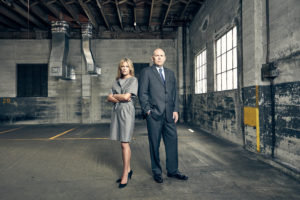Turbine engine hot section manufacturing is a complex industry that involves risk of serious injury and an adherence to safety rules and best practices.
There is a common maxim that two technologies liberated the modern world: the automatic washing machine and the jet engine. When RAF Lieutenant Frank Whittle received an English patent on the basic design for the modern jet engine in 1930 (the first flight was not until 1941), he probably could not have imagined the changes that would occur, in materials, complexity, and performance capability.
Today’s commercial jet engines have as many as 25,000 parts. They are up to eleven feet in diameter and twelve feet long. The engines can weigh more than 10,000 pounds and produce 100,000 pounds of thrust. Even the engine on a fully tested and approved design may take two years to assemble. A super-jumbo jet can carry 500-800 passengers, depending on configuration, and have a take-off weight of 1.2 million pounds.
Section I will provide a basic overview of the production and metallurgical complexities associated with the manufacture of some hot section components. Section II will address a unique aspect of jet hot section manufacturing. Specifically, the complex and exacting standards required to avoid catastrophic in-flight aviation accidents also require the most disciplined adherence to best practices for safety to avoid catastrophic occupational injury, particularly burns, in high temperature work environments. Section III will briefly discuss the catastrophic burn injuries that result from failure to follow exacting safety precautions.
Section I: The Hot Section
At the front of the engine, a fan drives air into the engine’s first compartment, the compressor, a space approximately 20 times smaller than the first stage of the compressor. As the air leaves the high-pressure compressor and enters the combustor, it mixes with fuel and is burned. As the gas is combusted and expands, some gas passes through the exhaust and some is rerouted to the engine’s turbine (a set of fans that rotate compressor blades). The turbine extracts energy from the ultra-hot gases to power the compressor shaft and generate power.
Because the turbine is subject to such incredible heat, labyrinthine airways in the turbine blades allow cool air to pass through them to cool the turbine. With the cooling mechanism of the airstream, the turbine can function in gas streams where the temperature is higher than the melting point of the alloy from which the turbine is made.
Titanium, purified to aviation specifications in the 1950s, is used for the most critical components of the “hot section” such as the combustion chamber and turbine. The hardness of titanium is difficult to work with, but it is resistant to extreme heat. It is often alloyed with other metals such as nickel and aluminum for high strength/weight ratios.
Hot Section Component Manufacturing
The intake fan. The fan must be strong so it does not fracture if large birds or debris are sucked in. It is made of a titanium alloy. Each fan blade consists of two skins produced by shaping molten titanium in a hot press. Each blade skin is welded to a mate, with a hollow cavity in the center being filled with titanium honeycomb.
The compressor disc. This is a solid core, resembling a notched wheel, to which the compressor blades are attached. It must be free of even minute imperfections, since these could cause creeping or develop into fractures under the tremendous stress of engine operation. Historically machined, compressor discs are now manufactured through a process called powder metallurgy, which consists of pouring molten metal onto a rapidly rotating turntable that breaks the molten metal into millions of microscopic droplets that are flung back up almost immediately, due to the table’s spinning. As they leave the turntable, the droplets’ temperature plummets by 2120 degrees Fahrenheit (1000 degrees Celsius) in half a second, causing them to solidify and form a very fine metal powder, which solidifies too quickly to absorb impurities. The powder is packed into a forming case and vibrated in a vacuum to remove air. The case is then sealed and heated, under 25,000 pounds of pressure per square, inch into a disc.
Compressor blades. These blades are still formed by traditional methods of casting. Alloy is poured into a ceramic mold, heated in a furnace, and cooled. The mold is broken and blades are machined to final shape, often to exacting tolerances on the order of 7 microns.
Combustion chambers. Combustion chambers blend air and fuel in small spaces for long periods of time at incredible temperatures. Titanium is alloyed (to increase ductility) and then heated to liquid before being poured into several complex segment molds. The segments are welded together after cooling and removal.
The turbine disc and blades. The turbine disc is formed by the same powder metallurgy used to create the compressor disc. However, turbine blades are subjected to even greater stress due to the intense heat of the combustor. Copies of the blades are formed by pouring wax into metal molds. Once set, the wax shape is removed and immersed in a ceramic slurry bath, forming a ceramic coating. Each cluster of shapes is heated to harden the ceramic and melt the wax. Molten metal is then poured into the hollow left by the melted wax.
The metal grains of the blades are then aligned parallel to the blade by directional solidifying, which is important due to the blade stresses. If the grains are aligned correctly, the blade is much less likely to fracture. The solidifying process takes place in computer-controlled ovens to precise specifications. Parallel lines of tiny holes are formed to supplement internal cooling passageways, either by a small laser beam or by spark erosion, where sparks are carefully allowed to eat holes in the blade.
Turbine blades are subject to temperatures of around 2,500 degrees Fahrenheit (1,370 Celsius. At such temperatures, creep, corrosion, and fatigue failures are all possible. Thermal barrier coatings, such as aluminide coatings developed during the 1970s, facilitated cooling. Ceramic coatings developed during the 1980s improved blade capability by about 200 degrees F. and nearly doubled blade life.
Modern turbine blades often use nickel-based superalloys that incorporate chromium, cobalt, and rhenium. Some superalloys incorporate crystal technology. Nimonic is another super low-creep superalloy used in turbine blades. Titanium aluminide, a chemical compound with excellent mechanical properties at elevated temperatures, may replace Ni based superalloys in turbine blades. GE uses titanium aluminide on low pressure turbine blades on the GEnx engine powering Boeing 787s. The blades are cast by Precision Castparts Corp.
Exhaust system. The inner duct and afterburners are molded from titanium, while the outer duct and nacelle are formed from Kevlar, with all components welded into a subassembly.
Section II. Defects in Both Hot Section Components and Safety Procedures Can Result in Catastrophic Injuries
An imperfection in the hot section, which results, for example, in a blade fracture during flight, or excessive creep, may result in an uncontrolled engine failure, among other catastrophic inflight mishaps, putting lives at risk. In an interesting corollary, unique to very few manufacturing settings, adherence to the safest manufacturing processes will minimize both product defects and worker injuries, primarily serious burns.
Few Things Drive Higher Verdicts, Workers Compensation Costs, or Settlements, Than Burns
In those industries where “serious large burns” can arbitrarily be defined as full-thickness burns over 20% or more of the total body surface area (TBSA), the location of the burns and the relative availability of certain types of grafts can be outcome determinative and correlate directly with litigation risk, settlements, and verdicts. Most problematic are 4th degree burns to the hands or face, which can never, ever, be fully repaired with current surgical technology or therapeutic treatments.
Skin Graft Classification
There are two common types of skin grafts. A split-thickness graft (STSG), or mesh graft, includes the epidermis and part of the dermis. A mesher makes apertures in the graft, allowing it to expand approximately 9 times its original size.
Alternatively, a full thickness skin graft, or sheet graft, which involves pitching and cutting away skin from the donor section, is more risky in terms of rejection. Yet counter-intuitively, this method leaves a scar only on the donor section, heals more quickly, and is less painful than split-thickness grafting. This type of grafting, sheet grafting, must be used for hands and faces/heads where graft contraction must be minimized, and it is therefore extremely difficult to achieve in large TBSA burns.
Remedies
Although workers compensation laws will generally bar litigation by workers against their employers, in cases where the exclusive remedy provision of workers compensation does not apply, it is not uncommon in the United States to see burn verdicts or settlements in the millions or even tens of millions of dollars. Mandatory PPE and best safety practices for dealing with ultra-high temperature work environments can minimize injuries, although the practical reality is that elimination of such injuries remains an aspirational goal.

